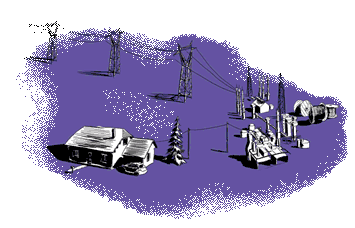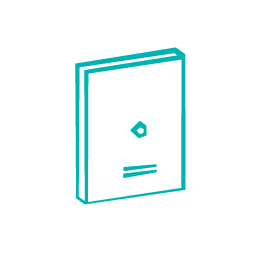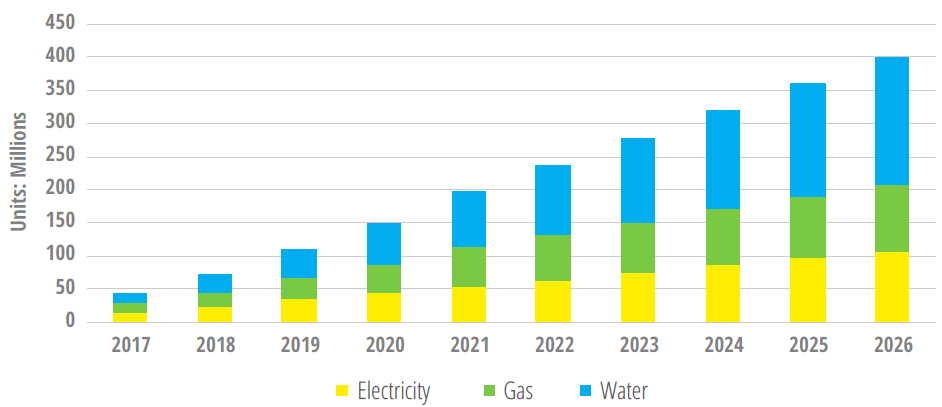With constant urbanization as well as demand for greater efficiency, utility companies need to augment capacity while developing new solutions to optimize management of their existing utility assets. When it comes to how we manage the delivery and use of energy and water, or how we run our cities, there’s a lot of opportunity for improvement. The introduction of smart grids, smart meters and new ways of generating and transporting energy are being driven by the IoT. It enables smart utility services where energy, gas and water use is being monitored and proactively managed for waste reduction, conservation, and sustainability goals.

The key feature of these applications, of course, is connectivity. LoRaWAN® open standard technology is a proven leader for smart meter applications, delivering solutions that are easy to scale, optimizing operational cost and reducing utility waste. Actility’s ThingPark IoT connectivity platform is well equipped to be the front-runner in this rapidly expanding market of IoT-based Smart Utility solutions, by managing both private and public networks and enabling an ecosystem of IoT sensors and applications.
Actility deploys unified, scalable, multipurpose IoT network infrastructure for utilities and cities, providing well-defined points of interoperability between systems, and greatly simplifying and reducing integration costs and difficulties. So electricity, gas and water utilities and cities can focus on creating business value through outcomes that improve services and enhance the lives of customers and citizens.
Smart Water metering IoT solutions enable utility companies, cities, municipalities, buildings and industrial sites to improve the performance of their water distribution system, reduce infrastructure investment and operating costs by implementing automated water consumption monitoring, water flow metering, and leakage detection. Actility’s IoT connectivity platform is used for high scale smart metering projects, benefitting from LoRaWAN™ technology and its long range and low power capabilities.


Enable Meter-to-Cash services by visualizing water consumption, using connected meters. Reduce billing costs by eliminating manual meter readings and reading errors. Reduce consumer bills by giving them access to real-time water usage data to identify potentials to enhance water efficiency.

Reduce non-revenue water losses through quick detection of water leaks and instances of fraud, using connected sensors, and address leaks prior to them becoming costly main breaks. Improve water management to ensure sustainable management of water resources and to enhance revenue collection.

Operate a continuous health monitoring of the water distribution system, with synchronized pressure, flow and quality measurements using connected IoT sensors. Advanced sensing data can be correlated with other data to enhance analysis, reporting, and prioritization of problem-solving.

Remotely disconnect or limit water flow to an end customer using connected Smart Valves, using bidirectional, low-latency IoT connectivity. It reduces the need to roll a truck to perform this function, saving money while enhancing the safety of field crews.
Natural gas is delivered to residential houses for heating and cooking purposes. Records of its consumption should be kept, as well as for electricity and water. The loT has developed a state-of-art gas metering solution based on long-range low-power wireless protocol – LoRaWAN™ – and going beyond simple meter reading, by improving operations and safety. Actility provides the IoT connectivity platform enabling cities and public utility managers to implement a highly accurate and easily installed solution for gas utility management.


Remotely measure gas flow rate through pipes via wireless LoRaWAN™ network and visualize gas consumption, with the ability to view usage trends. Reduce billing costs by eliminating manual meter readings and reading errors. Reduce consumer bills by giving them access to real-time gas usage data and improving their consumption habits.

Smart Gas IoT solution allows to visualize what’s happening inside gas pipelines: pressure changes, temperature, pipeline stress via strain gauges, the status of cathodic protection and more. Get real-time data with prioritized alarms that allow you to maintain safe delivery operations, employee safety and meet regulatory requirements.

Automate and correlate readings to reduce gas losses. Monitor changing levels of methane using smart methane sensors. Remote disconnect valves are used to shut off gas service when elevated levels of methane are detected, alleviating potentially dangerous situations before they arise, keeping utility personnel and customers safe.
loT offers to energy companies cost-effective metering solution, also allowing to operate peak and off-peak pricing, fault detection, remote switching and more, therefore creating Smart Grids – electricity supply networks using digital communications technology to detect and react to local changes in usage. Actility’s IoT connectivity platform enables reliable Smart Grid solutions in extensive areas using LoRaWAN™ capabilities. Just as IoT can enable demand-based energy production, utilities can further influence demand by offering consumers incentives to use energy at particular times with transparent pricing leading to lower bills, while the grid operator can reduce the cost of building greater capacity.


IoT brings effective and scalable grid automation in a wide urban area with smart electricity meters transmitting readings via LoRaWAN™. IoT utility metering and submetering allow to monitor electricity usage remotely and reduce billing costs by eliminating manual meter readings and errors. Reduce consumer bills by giving them access to real-time energy usage data.

Electric power diversion detection can now be based on real-time, continuous, and localized analysis of changes in electric current flows and voltage levels in the distribution network to distinguish legitimate metered loads versus those from theft. The IoT solution helps to identify when current is drawn on the secondary of a transformer that did not go through a meter.

Smart meters enable transformer load management, performed at the device level by continuously calculating and monitoring impedance throughout the lower voltage system. Utility companies can save money and time, avoid utility energy losses and serious safety risks by knowing when the transformer is approaching overload situations and taking action to avoid this situation.

Substation temperature and humidity affect asset performance and lifespan. Remote LoRaWAN™ sensing monitors grid conditions, detects overheating and unauthorized access in cabinets, assesses lightning strikes with surge arresters, prevents cable theft, and identifies faults in overhead power lines near pole-mounted boxes.

IoT enables precise load control, allowing reduction during peak demand without affecting customers. Residential Demand Response becomes simple and affordable with integrated electrical panel devices, encouraging energy-efficient behavior. This helps utilities manage infrastructure use, lowering CAPEX, OPEX, and customer bills.

LoRaWAN™ has the lowest cost for network infrastructure deployment and maintenance thanks to its high link budget, long range, good redundancy and ease for scaling densification.

Cities have the choice to either deploy their own city-scale LoRaWAN networks or leverage existing public ones. The network serves existing business units and can be built on existing city infrastructure.

Very low-power bi-directional communications, deep indoor penetration and can work in a remote, harsh environment, high reliability of the network infrastructure and the sensors

LoRaWAN industrial sensors are optimized for a battery life of up to 15 years, and for transmission frequency, LoRaWAN offers one of the best options for mitigating battery life issues through network densification.

The LoRaWAN specification uses 128-bit Advanced Encryption Standard (AES) algorithms to provide end-to-end encryption using two keys: one for the users, for protection of payload content; another for operators, for network authentication security.

Cities have the flexibility to integrate devices from multiple vendors and benefit from interoperability at the network level.
The smart meter market is growing fast, driven by demand for smarter utility management in cities, buildings and facilities, and various industries, all faced with similar challenges such as resource waste reduction, electric transportation, water conservation and management of renewable power. Industry regulations increasingly require accurate meter data to be collected at regular intervals and made available to all energy suppliers for billing purposes. Utilities are changing dramatically to deal with new energy sources and to improve the relationship with their customers. Smart water and electricity monitoring can help save money by giving people more control over their home utilities, while efficient refuse management will help to keep cities cleaner.
Grid operators are looking to save on maintenance, distribution, and transmission while utilities offer new services to engage end users. A number of new energy sources such as biogas, industrial waste, liquid biofuels, solar photovoltaic, and wind contribute to filling the increasing demand. The energy sector is also heavily influenced by government policy and the need to comply with regulations, and IoT connected utility monitoring can assist with real-time compliance with regulations about feeding power into the grid. The transition to smart grids is essential to improve the safety and efficiency of connected utilities, boost reliability, lower costs, make better use of existing assets, and minimize environmental impact.
LoRa-enabled meters offer the ability to monitor utility usage in real time. The data collected is analyzed in Cloud-based applications for trends, and changes are made to reduce wasted utility consumption, resulting in cost savings on a monthly utility bill. For both residential or commercial usage, advanced IoT metering technology is replacing physical on-site reading, allowing dynamic pricing and enabling consumers to make choices about when they use electricity, water, or gas based on changing prices. Deploying sensors throughout the network and on remote meters will help secure energy independence, boost energy sustainability and lower costs for providers and users.
In a majority of the use cases mentioned above, the communication network requires small payloads of data in the tens of kilobits and low monthly data throughputs. In addition, most applications for metering on the utility network have a greater tolerance for latency. Only specific use cases—like breakers for electricity, prepayment systems, or advanced valve control – may justify a need for low latency. As a leading LPWA technology, the LoRaWAN™ protocol offers some of the best capabilities for addressing current and future smart utility distribution and automation system requirements. According to ABI Research, by 2026 nearly 20% of smart meters deployed by energy and water utilities worldwide will be connected using noncellular LPWA networks.

Utilities have the choice to either use their own private LoRaWAN networks or leverage existing public LoRaWAN networks. Traditionally, energy utilities have deployed their own private communication networks to monitor the grid; however, they have more recently started to open up to public networks that are managed professionally by network operators. Actility provides its LoRaWAN™ network server and software to manage public or private networks, under a unified, scalable, multipurpose IoT network infrastructure. A single platform facilitates the deployment, operation, and maintenance of smart utility projects.

The LPWA network is a cost-effective solution which allows utilities to have complete control of the network and data with only a few base stations, and managing sensors and devices with a very low Total Cost of Ownership. Once the network is deployed, it’s easy and cost-effective to expand the value of the network investment over time by adding new devices. It also provides standardized, robust security; state-of-the art network management tools; and high quality of service. Through an ecosystem of partners utilizing Actility’s interoperable platform, utilities can now leverage significant advancements in IoT technology, including multi-application networks; cloud computing; data analytics; and a new generation of battery-powered edge devices and sensors. All these technologies come together in our IoT connectivity platform that delivers new and differentiating value to enable smart utilities.
The market leading, most complete, powerful and flexible multi-technology LPWA IoT Network platform. ThingPark Wireless is the preferred IoT network platform for Service Providers rolling out LPWA connectivity services, already powering over half of national LoRaWAN™ network deployments worldwide .
ThingPark Wireless is the heart of your IoT network, enabling secure connectivity, data flow, and management from sensors to cloud applications. ThingPark Wireless is modular, and scales easily, enabling Service Providers to monetize connectivity and accelerate the adoption of IoT solutions across multiple industries.
With ThingPark, become part of a thriving community of innovators shaping the future of IoT. Our platforms are more than products—they’re a springboard for collaboration, growth, and the realization of transformative IoT solutions.